RCA COSMAC Microkit
SHARE |
|
  RCA COSMAC Microkit
RCA COSMAC Microkit |
by Bill Degnan - 04/05/2013 10:44 |
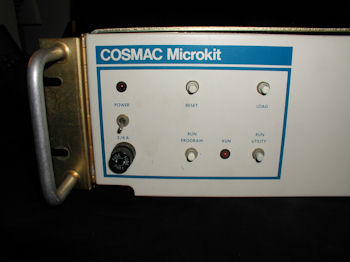 The 1974 RCA COSMAC Microkit. This is the first commercial microcomputer from RCA to contain the two-chip COSMAC microprocessor (TC 1084 / TC 1085 version). The processor was developed in New Jersey, but the kit itself came out of the RCA Palm Beach Division. Click image for larger view.
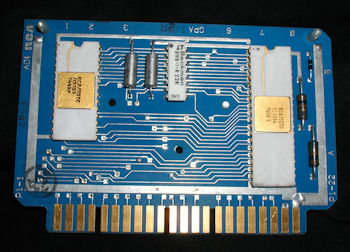 Note the TC 1085 chip on the processor card, which is the earlier name for the CDP 1801 and has a silk screen date of late 1974. Click image for larger view.
Compare the above processor card with the later "1801" processor card from the RCA COSMAC MicroTutor: http://www.decodesystems.com/cosmac/mt5.jpg 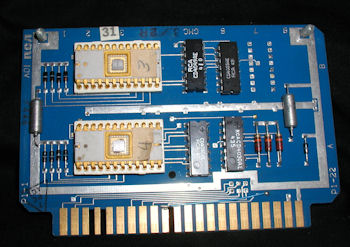 Pictured is the 3901803 ROM card, which has space for two 1702R ePROMs (not A). I need to download these chips to see what they do. Click image for larger view.
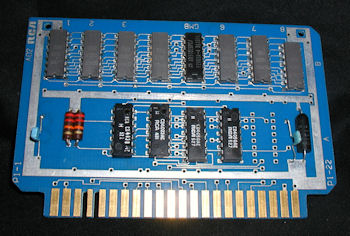 Pictured is the of of the three 3901801 RAM cards that came with this system, 8 Intel 2012's. Click image for larger view.
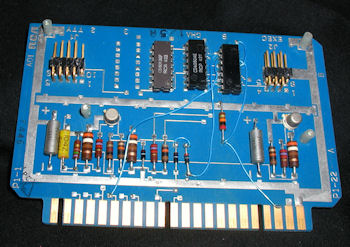 Here is a photo of the TTY I/O card, part number 3901809.
I am looking for a COSMAC Microkit user manual. See also: 1975 Microcomputer Directory from the EDN Microprocessor Design Series Volume II published in 1975. This appears to be a supplement publication to the EDN Journal. Here is an article about the Microkit that came out later in 1975: http://bitsavers.trailin...Digest_v02n04_Oct75.pdf More RCA COSMAC Microkit photos Reply |
|
  RCA COSMAC Microkit History
RCA COSMAC Microkit History |
by Bill Degnan - 04/08/2013 15:57 |
|
Here is a post from the Mid-Atlantic Retro Computing Hobbyists message board thread about the MicroKit from 2009. Evan K tracked down the daughter of the designer of the COSMAC microprocessor, Joyce Wiesbecker in 2009, her comments to follow:
------------- " You're right about the Microkit 1. It was RCA's hardware development kit targeted at design engineers looking to embed a microprocessor into their equipment. I never even saw one of them, only read the product brochure, because - Man!!! - that thing cost thousands of dollars, and RCA made its employees buy those kits at full price! That was an RCA Somerville project, so my father had no input. My father was building the prototypes (in our basement) for all the other computers I mentioned, and his group at the Sarnoff Labs was developing those models, so he got to bring home one of each of the final production models. (Yes, every aspect of the 1802 - microprocessor, computers, videogame, and kits - was a skunkworks project.) You really have a collectible in that Microkit 1, Bill. It was the predecessor to the VIP. Dad pitched the VIP as a cheaper, more accessible (and therefore better selling tool to OEMs) than the Microkit 1. But it was also the only way he could get RCA to offer a hobbyist computer since management was dead set against the idea :). Between the limited production run, the high cost, and the fact that most of them were the property of the employer, not the engineer, your Microkit 1 is probably one of the rarest production model computers still around. (Even I had forgotten it existed until you mentioned it!) Congratulations on your rare treasure! Joyce" -------------------------- John C. Hartmann The original owner of this particular Microkit was John C Hartmann of Cedar Grove NJ, ham radio operator (W2PGI), who worked at RCA in Princeton as an electrical engineer. John passed away in 2010, he earned one patent while working with RCA in 1977 for a bidirectional digital position encoder. http://www.google.com/patents/US4194184 Reply |
|
  RCA COSMAC GGB 3901804 Pic Added
RCA COSMAC GGB 3901804 Pic Added |
by Bill Degnan - 04/17/2013 16:46 |
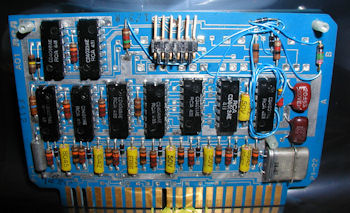 RCA GGB 3901804 Serial I/O board. Note the crystal is a 1.95000 mHz (~2 mhz?) Click for larger view.
Reply |
|
  COSMAC Microkit 1801 Monitor
COSMAC Microkit 1801 Monitor |
by Bill Degnan - 04/17/2013 23:56 |
|
Here is a dump of the ROM monitor from the Microkit. Note that the instruction set (should be) from the less complex 1801 instruction set, quite a rare piece of code:
DUMP FROM 2 1702 (not 1702A) ePROMs: ------------------ 1702r DUMP (NOT 1702a) prom marked "3" 00: FF 07 7F 4F 07 7D 4E 07 E1 5E 07 5F 4B 1E 07 2F 10: AE 0C C5 D6 DE 6B 03 8F CC E3 03 DE 03 80 4B AE 20: 0C C5 D6 2E AE DE DE CF F1 6F 4A 4C 07 CF 5A 2A 30: 1A 8E AA 9F FE 07 FF 4D 5D 07 01 5C 2C 07 63 5C 40: 2C F2 2C F5 2C D5 6D 52 42 07 C4 5C 2C 04 DB CD 50: 29 04 FA 5E CD A5 04 E1 C5 B9 2C 04 B2 C5 34 2C 60: C4 A0 2C CC 9D 04 DF C5 34 62 4F 72 5F 7E CD 4A 70: 6D 52 42 2C CC 8C 04 F2 C5 34 07 63 5C 2C F5 6F 80: 40 07 51 5C 2C 7F 40 07 51 5C 2C 2C DF BF 40 07 90: 51 5C 2C D2 72 C5 65 62 CD C2 7F 05 F0 C5 5A 2C A0: C4 2C F2 CF 82 09 CC 72 2C DF CF 72 2C C4 53 2C B0: C4 34 72 AF EF 2C CC 50 04 F2 CD C2 04 DE CD 53 C0: 04 E8 C5 4A 2C 04 F2 C5 3B CF A0 07 63 5C 2C F2 D0: 2C F5 2C C0 CF C2 2C 04 AF C5 34 2C CC 24 04 F2 E0: C5 34 62 4F 72 5F 07 63 5C 2C F5 1A 8F FF 2C 61 F0: 09 51 D1 BC 00 FE C5 0B 71 CD 11 DC CF 0D 6C 43 prom marked "4" 00: 07 FF 51 50 07 10 53 C8 F8 C0 F6 07 FC 00 FE C5 10: F2 70 C5 E8 C8 E6 E0 C8 E1 E1 07 F8 CF F2 D1 D1 20: 71 06 FE 41 23 F3 C0 D3 61 05 01 41 23 D9 2A 03 30: F8 CC C8 03 F5 CC 88 03 FF 60 2A 07 FF C7 6C 50 40: 07 7F 40 1D C0 BB C8 B9 23 FD 07 FF AD 61 05 FE 50: 0E AD 98 DD 23 F8 07 FE AD 60 09 40 CC 9A 06 7F 60: C0 B5 40 CF B2 98 DD CD BF 70 C5 C6 60 00 BE C4 70: D0 00 F9 CC C8 03 EF 51 62 AD 0B AD 0B AD 0B AD 80: 0B AD 72 09 09 09 09 0E 42 72 AD 0B AD 0B AD 0B 90: AD 0B AD 71 05 F0 0E 52 00 FF CF C6 23 E8 C7 2A A0: BA C7 B9 C7 60 51 04 F5 C5 3F 07 74 CF 3D 60 09 B0: 09 09 09 03 09 C4 46 03 F8 00 39 51 07 E4 CF 3D C0: 07 F4 50 1D 07 FF AD 98 DD 71 AD 23 F8 D0 0F 51 D0: 05 FE AD 98 DD 70 05 F0 CD 1D 71 71 09 06 7F AD E0: CF 35 70 03 04 50 C4 60 00 E4 CD 60 C4 0D 07 FF F0: CF 02 60 05 F0 03 09 C4 04 03 F8 00 39 51 CF 3B Reply |
|
  Inverted Bus ?
Inverted Bus ? |
by Bill Degnan - 04/18/2013 12:12 |
|
> > Inverted BUS? I have not yet started trying to determine the purpose of the code.
> > Comment I got from Mid-Atlantic Retro Group: Some early bus structures were "inverted" in that a logic 0 was represented by what you would normally consider a logic 1 voltage. For TTL, this means that +3 and up is logic 0. The Ohio Scientific uses such a bus for their OSI-48 structure. Tranceivers usually exist with an inverted complement, like the 8T26/8T28. It's usually for convenience, since a non-inverting buffer is usually two inverters in a row (one of which is tri-state). Inverting ones are faster and, back when it mattered for individual ICs, were cheaper. For open-collector buses, they make lots of sense; for example, most DEC buses were inverted so that you could drive data directly to the drive transistor. In this case, if you had an inverted bus, it would make sense to store the ROM as inverted so you didn't have to put another buffer chip on the bus. If you're trying to disassemble it, just run it through a program to flip the bits Reply |
|
  COSMAC Processor Dates Timeline
COSMAC Processor Dates Timeline |
by Bill Degnan - 04/24/2013 23:54 |
|
Herb Johnson writes:
http://www.retrotechnolo...memship/1802_dates.html Bill, this document now points to your Web page on your pre-1801 COSMAC processor kit. I called out dates for your two processors. Note that my page identifies earliest dates for publications about the "COSMAC processor". There's even earlier RCA documents about developments for large-scale integration in SOS and CMOS, and about reducing a computer architecture to a "micro-processor". I may cover those in due course. Reply |
|
  RCA Microprocessor Hardware Support Kit
RCA Microprocessor Hardware Support Kit |
by Bill Degnan - 09/21/2013 17:38 |
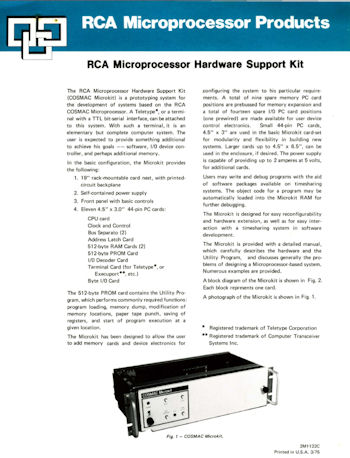 Page 21 of the 1975 RCA Microproducts catalog includes a description of the RCA Microprocessor Hardware Support Kit (COSMAC Microkit) on page 21. The above image is a snapshot. Look familiar? The date on page 21 is 3/75, which is about right. Click on image to download the catalog.
Thank you Bill Dromgoole for emailing me a copy of the document, which he downloaded from bitsavers.trailing-edge.com There is a book: Microcomputers/Microprocessors: Hardware, Software, and Applications John L. Hilburn Paul M. Julich: Which describes the Microkit. I made a copy of a dead web site page that describes the book here. I have ordered the book for 44 cents! Reply |
|
  RCA 1975 Research Report
RCA 1975 Research Report |
by Bill Degnan - 01/25/2014 11:47 |
|
Check pages 14-15 of the RCA 1975 Research Report. These pages describe the timeline of the COSMAC Microkit / MicroTutor and related events.
Reply |
|
  RCA Microkit ROM Code Analysis
RCA Microkit ROM Code Analysis |
by Bill Degnan - 04/17/2014 09:33 |
|
H. Johnson's page that provides an RCA Microkit ROM Code Analysis
http://www.retrotechnolo...mship/microkit_ROM.html Reply |
|
  Operator Manual Clues
Operator Manual Clues |
by Bill Degnan - 08/26/2016 10:22 |
|
The MPM-216 Operator Manual for the RCA. COSMAC Development System II (1977) offers clues about card placement and operation of the COASMAC Microkit. The System II has a similar chassis and backplane and it's possible that the card placement is also the same. I should be able to get more clues at least, I don't want to power on the Microkit with cards installed until I have confidence there in the right slots, power-wise.
http://www.cosmacelf.com...-216-dev-sys-op-man.pdf Reply |
|
  Preliminary MPM-103 Found!
Preliminary MPM-103 Found! |
by Bill Degnan - 10/16/2018 20:28 |
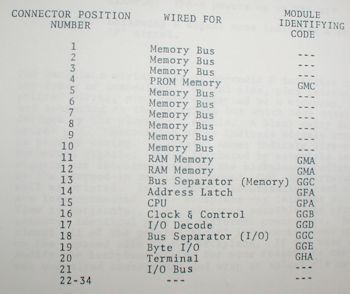 Five years searching and finally I found a copy of the Operator's Manual for the Microkit. Pictured is the module assignment chart, vital for operation of the Microkit. I don't believe the person who sold this to me had any idea where to put the cards, he simply inserted them any old way. Fortunately no power cord was included, I assume power was not applied since the original owner used it. Glad I was patient to verify their correct locations. Click image for larger view.
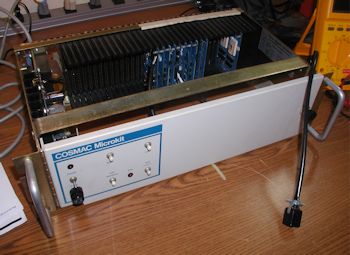 The complete set of Microkit modules, installed. Finally. Click image for larger view.
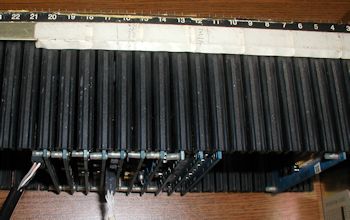 Here is a view from the top, note the card guide numbers. The card guides are completely intact, they have not become brittle like those of the Microkit's contemporary the MITS Altair 8800. The Microkit was an expensive well engineered device that seems to have held up nicely. Click image for larger view.
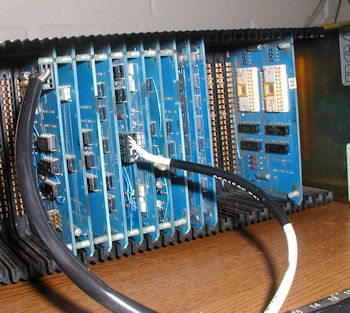 Here is a close up of the modules. The far left module (Terminal Interface GHA01) cable attaches to a Teletype and the other cabled module (Clock Control GGB) connects to the front panel. The 5V signal is pulled through the backplane through the clock control cable, otherwise the front panel has no source of power as designed. Click image for larger view.
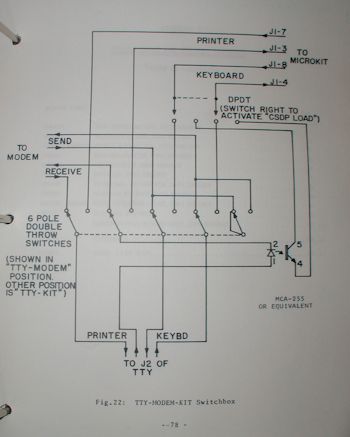 Another key page from the manual, the TTY pin assignments. Click image for larger view.
A more detailed checkout to follow... Card by card I applied power and was able to make it through the general troubleshooting steps without issues. When I apply power to the unit the red Power LED lights and the remaining lights stay dark. Depressing the RUN UTILITY button causes the RUN indicator to light momentarily. If the system is attached to a terminal (in my case a Teletype), depressing the RUN UTILITY button would also cause the system to bootstrap. Striking either the CR or LF key, assuming everything is ok, will cause the system to send an asterisk character to the printer. From the asterisk prompt one can enter U2 monitor commands. NEXT - Attach to a Teletype On the Microkit the pins are: 4 (grey) keyboard in (TTY TS 7) 8 (black) keyboard out (TTY TS 6) 3 (orange) printer in (TTY TS 4) 7 (white) printer out. (TTY TS 3) RESULTS - Current loop is established and the system resets properly. When I run the RUN UTILITY and strike LF or CR on the Teletype nothing happens. The keystroke is not frozen however, it appears to be transmitting, but it appears that nothing is being sent. NEXT: Put an oscilloscope on the Terminal module, see what's happening. Reply |
|
  RCA 1800 Family Oral History Panel
RCA 1800 Family Oral History Panel |
by Bill Degnan - 12/21/2018 13:07 |
|
Here's an interesting video that helps explain what was going on at the time the COSMAC Microkit was being developed, in particular what role the Palm Beach office had in the development of the 1800, in automotive engineering, etc.
https://www.youtube.com/watch?v=pmGkgoH3kO0 Reply |
|
Resources:
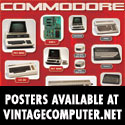
Popular Topics and FAQs
Past Issues:
Before we switched over to a blog format, past page archives here:
Vintage Computer Festival East 3.0 June 2006
Commodore B Series Prototypes July 2006
VOLSCAN - The first desktop computer with a GUI? Oct 2006
ROBOTS! - Will Robots Take Over? Nov 2006
Magnavox Mystery - a Computer, or? Jan 2007
The 1973 Williams Paddle Ball Arcade Computer Game Feb 2007
The Sperry UNIVAC 1219 Military Computer May 2007
VCF East 2007 - PET 30th Anniversary June/July 2007
The Electronic Brain August 2007
Community Memory and The People's Computer Company October 2007
Charles Babbage's Calculating Machine December 2007
Vintage Computing - A 1983 Perspective February 2008
Laptops and Portables May 2008
From Giant Brains to Hobby Computers - 1957 to 1977 August 2008
Historic Computer Magazines November 2008
World's Smallest Electronic Brain - Simon (1950) December 2008 - Feb 2009
Free Program Listings Spring 2009
Computer Music Summer 2009
Popular Electronics Jan/Feb 1975 - Altair 8800 Fall 2009
Early Microcomputer Mass Storage Summer 2010
manuals 2
This image was selected at random from the archive. Click image for more photos and files from this set.